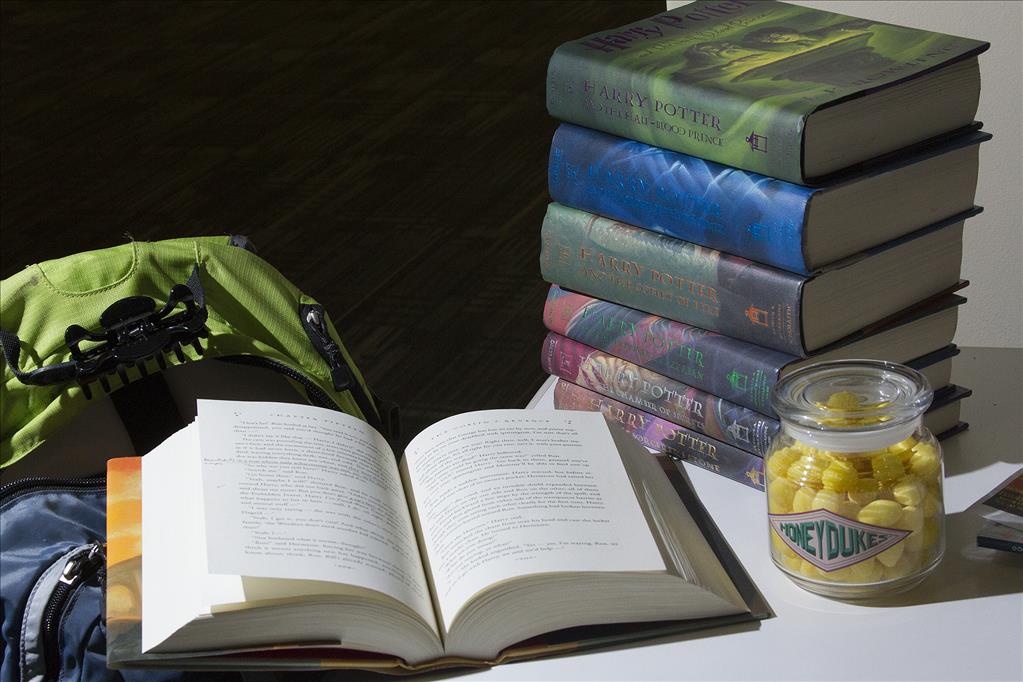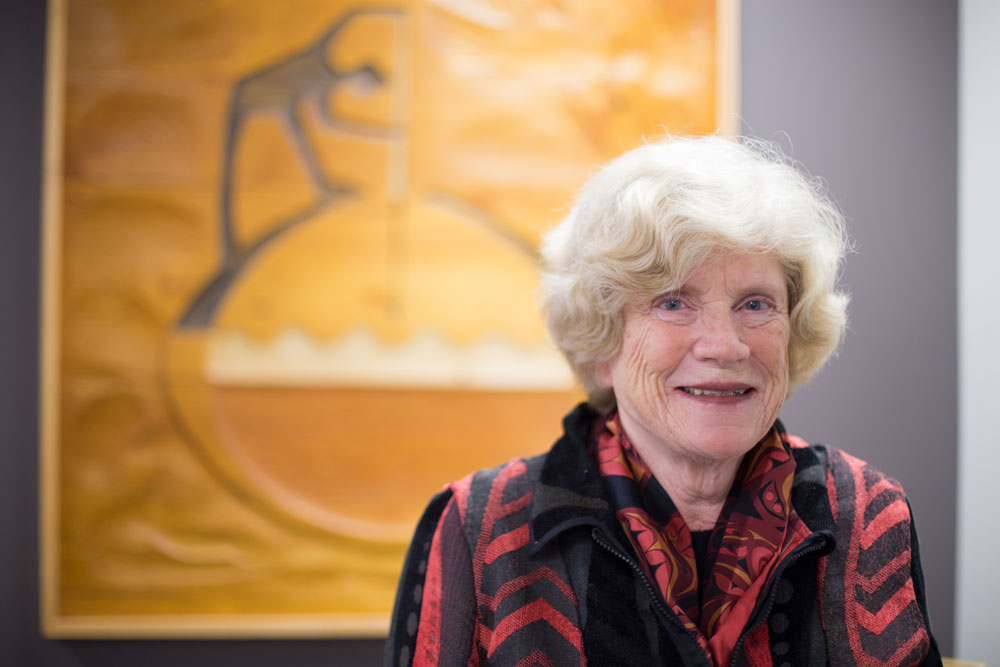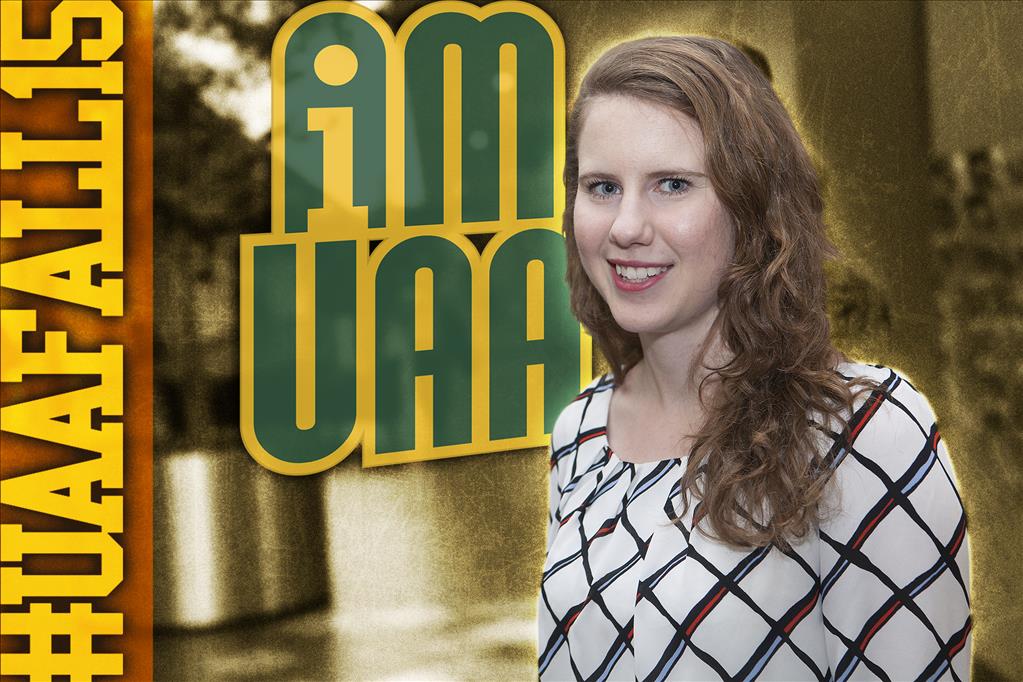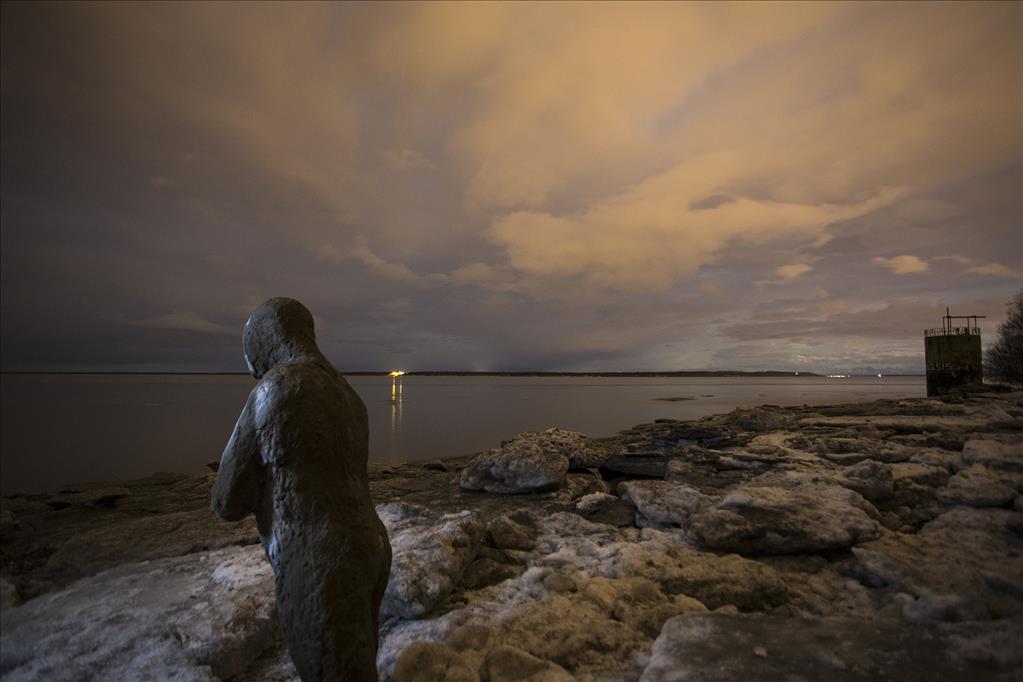Kids find their bliss at UAA summer engineering academies
by Tracy Kalytiak |
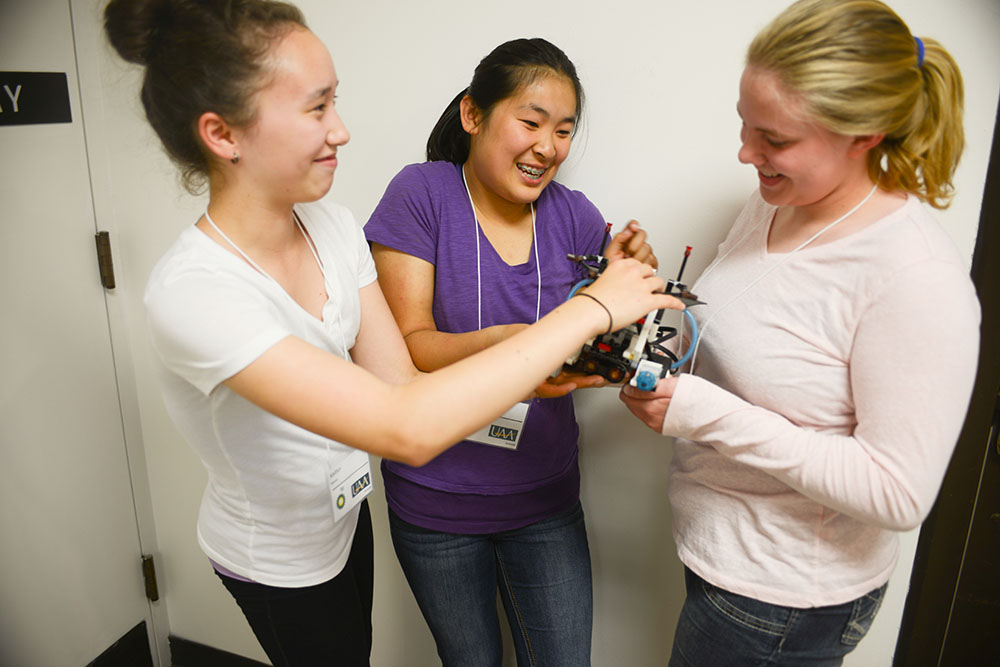
Kaitlyn Hanson, Lara Eck and Kellianna Mikawa display a robot they built at a UAA summer engineering academy session on robotics. (Photo by Tracy Kalytiak/University of Alaska Anchorage)
Gwen McKay likes rocks and plants, biological curiosities in her backyard, softball, and skating on ice. But she loves puzzles, especially the process of teasing out the solution to a difficult one.
One of UAA's summer engineering academies gave Gwen the opportunity to challenge herself by attending a week-long session involving robotics.
"You really had to think to get your robot to do what you wanted it to," the Trailside Elementary 10-year-old said. "It took us three days until we finally did it."
"It" was using a computer to program color, gyro and touch sensors of a Lego Mindstorms EV3 robot so it would perform tasks like following a line, shooting a ball into a basket and forcing other robots out of a competition area.
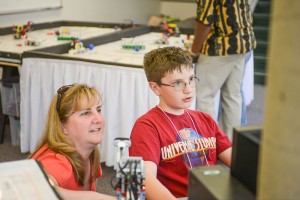
Lisa Turner watches as her son, Josh, shows her software he used to program a robot during a UAA summer engineering robotics academy session. (Photo by Tracy Kalytiak/University of Alaska Anchorage)
Gwen participated in a robotics academy Elaine Todd taught early in June. She took part in a previous robotics academy at UAA two years ago.
"Stuff she does? I never did that when I was 10," said Gwen's mother, Jennifer McKay. "Listening to her describe that, it's awesome. Gwen has always been interested in science, good at thinking of different ways to solve problems. I thought it would be a good fit for her."
Exposing kids to science
Dr. Scott Hamel, director of UAA's summer engineering academies, says 95 percent of the summer engineering academies' 440 spots are filled.
Creative coding is an academy introduced this year, Hamel said. Dr. Kenrick Mock taught that course.
"It's the most popular because everybody thinks they're going to get to play video games," Hamel joked. "There were 30 in it and 75 on the waiting list."
Other new offerings include Hamel's advanced structures (grades 9-12), Michael Backus' advanced robotics (one session for grades 6-8 and another for grades 9-12) and wing aerodynamics (grades 6-8), taught by Dr. Jifeng Peng.
UAA has presented the academies every summer since 2010, Hamel said. UAA faculty devised the 8 a.m. to 3 p.m. weekday sessions, which have given students a sampling of programs in UAA's College of Engineering-including civil engineering, geomatics, electrical engineering, mechanical engineering and computer science. The academies continue through July 31. Hamel's structure destruction (bridge engineering) academy and Dr. Matt Kupilik's alternative energy academy are two other courses offered.
A lottery now determines which students made it into the BP-sponsored sessions. The cost to parents this year was $200 for the advanced robotics and advanced structures sessions, and $100 for the other academies. Applicants could request fee waivers if they couldn't afford to pay, Hamel said.
The Alaska Native Science and Engineering Program also convenes a camp for middle-school children, but the two programs do not interact, Hamel said. "ANSEP is a long-term program," he said. "Our purpose is exposure. It's our job to take kids who haven't been exposed to science and engineering and say, 'Hey, here's engineering. It's fun!' That's our primary objective."
Making things happen
Gwen said programming a robot isn't easy. "It's confusing because there's a whole bunch of numbers," she said. "I kept putting in the wrong numbers. If something didn't work, you had to go back and find the part where it went wrong. There was a lot of programming. It wasn't code. There are boxes for the sensors and you can pull them up in your programming."
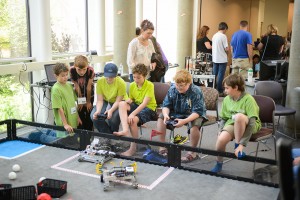
Boys in the UAA summer engineering academy work with their robots after taking part in the robotics academy session. (Photo by Tracy Kalytiak/University of Alaska Anchorage)
She and her partner, Cassidy, used math when figuring out the number of degrees they wanted their robot to turn.
"We put up a box that would move the robot forward when it saw something six inches away from it," she said. "We put into a loop for it to spin and scan for something six inches away. There's a wait box, a steering box, and you connect boxes with a line of programming to make a sequence of events happen."
Gwen's family moved to Anchorage from Oregon in 2010. "Anchorage is an awesome place to raise a family, with UAA, Trailside Discovery camp at BLM Alaska Campbell Creek Science Center. There are so many opportunities for kids and it's so supportive of families. I feel very blessed to have these opportunities for her."
Gwen's birthday is coming up, her mother said.
"She's been talking about the Lego brain," McKay said. "I'm thinking of getting it. We have so many Legos in this house!"
Written by Tracy Kalytiak, UAA Office of University Advancement
 "Kids find their bliss at UAA summer engineering academies" is licensed under a Creative Commons Attribution-NonCommercial 4.0 International License.
"Kids find their bliss at UAA summer engineering academies" is licensed under a Creative Commons Attribution-NonCommercial 4.0 International License.











